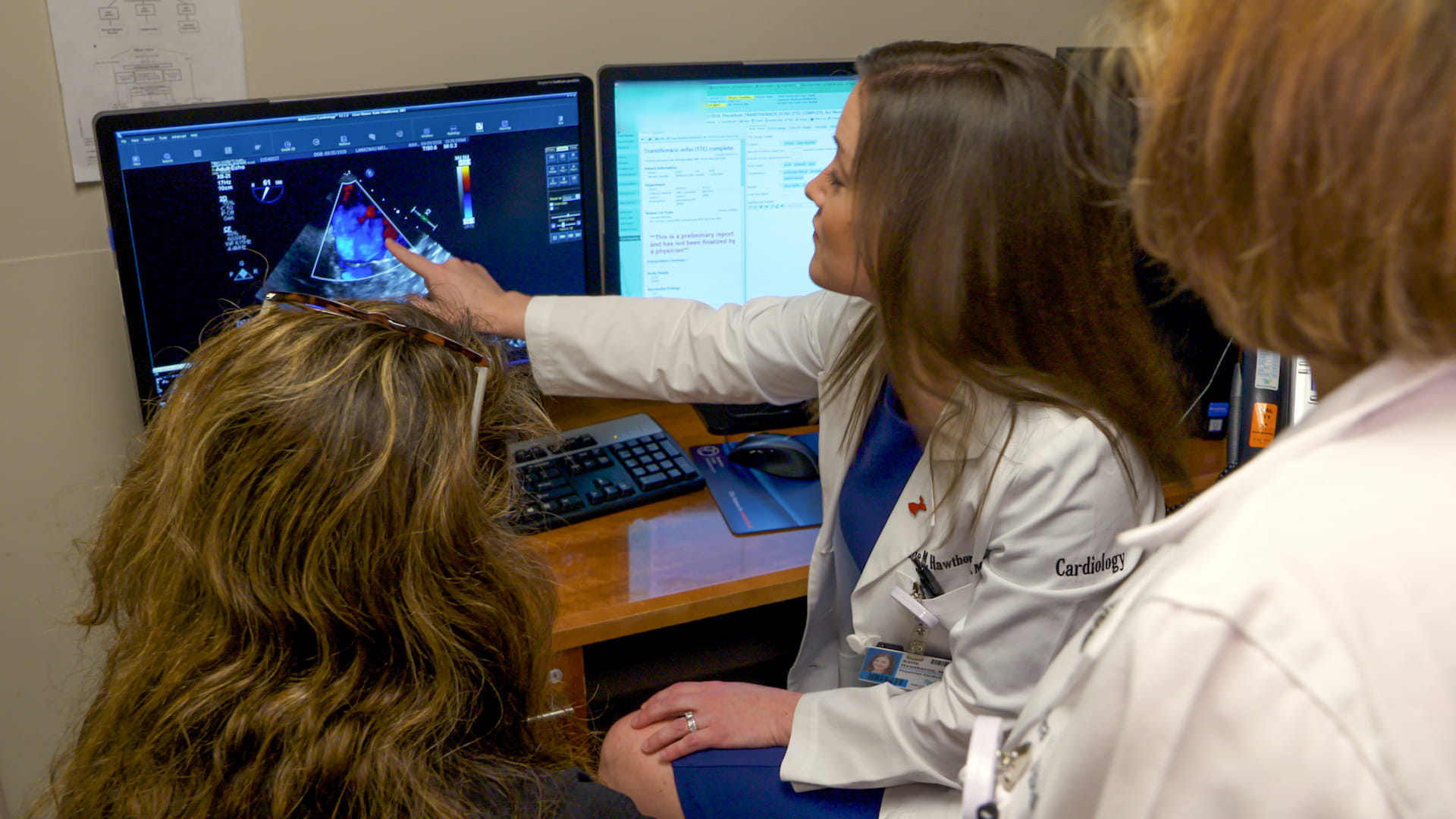Revolutionizing heart care through the power of advanced imaging

One of the pillars of premier cardiac research sounds as basic as can be: the ability to see. But in this instance, seeing refers to magnification and crisp clarity that can only come from advanced imaging — and the experts who know how to maximize the technology. This imaging plays a crucial role in establishing Lankenau Institute for Medical Research (LIMR) as a leader in research and clinical trials for novel cardiac procedures and devices.
"Companies will only allow you to participate in the clinical trials they sponsor if you have three components," says Sandra Abramson, MD, FACC, FASE, Director of Cardiovascular Imaging at Lankenau Medical Center. "You need a good cardiothoracic surgeon for open procedures. You need a good interventional cardiologist for minimally invasive procedures. And you need advanced cardiac imaging because if they can't visualize the pathology, they can't fix it."
Advancing heart valve care through imaging and research at LIMR
The work of LIMR and Lankenau Medical Center, both part of Main Line Health, is intertwined to the patient's benefit. Basel Ramlawi, MD, Chief of Cardiothoracic Surgery, and William Gray, MD, Chief of Cardiovascular Diseases, not only conduct surgical and minimally invasive procedures but are LIMR resident faculty members. Other cardiac physicians also are affiliated with LIMR. That close relationship fosters a variety of novel clinical trials, including many aimed at treating diseases of the tricuspid and mitral valves. Other trials are of devices to close off a pouch in the heart where blood clots usually form and often cause stroke in those with atrial fibrillation.
"Advanced cardiac imaging gives us the capability to see visual detail that other centers might not — and to do so in real-time as we perform procedures," Dr. Ramlawi says. "These imaging procedures allow us to place devices more precisely where they need to be."
Advanced imaging consists primarily of three modalities: echocardiography, cardiac MRIs and cardiac CT scans.
Echocardiography, known commonly as an echo, is a screening tool to determine the ability of the heart to pump blood and if valves are functioning properly, Dr. Abramson says. Patients with regurgitation of the mitral or tricuspid valves (backward flow of blood) may experience symptoms including fatigue and shortness of breath.
Using advanced imaging to guide precise diagnosis and treatment in cardiac care
If valvular heart disease is suspected, the patient likely would undergo a transesophageal echocardiogram, which involves inserting a tube down the esophagus and stomach — right behind the heart — allowing for even more precise images. If necessary, greater detail can come from an intracardiac echo — an ultrasound probe inserted into the heart.
Katie Hawthorne, MD, who leads the cardiac MRI program at Lankenau Medical Center, uses the test to precisely evaluate the heart's blood volumes and pumping ability.
"Cardiac MRI is the gold standard," Dr. Hawthorne says. "We can see what goes on in the heart muscle itself. It's almost like the heart is under a microscope."
The cardiac CT, adds Dr. Abramson, not only provides visualization of the heart and its vessels but is used to ensure access is unobstructed from the groin to the heart for catheter-based procedures.
Says Dr. Gray: "We leverage the multimodality advanced imaging that we have developed at Main Line Health to advance our abilities in the research realm. It is absolutely an integral part of our cardiac research program. It really sets us apart from many centers in the region and the country."
Next steps:
Learn more about heart and vascular care at Main Line Health
Learn learn more about cardiac research at LIMR
Make an appointment with Basel Ramlawi, MD
Make an appointment with William Gray, MD
Make an appointment with Katie Hawthorne, MD
 Content you want, delivered to your inbox
Content you want, delivered to your inbox
Want to get the latest health and wellness articles delivered right to your inbox?
Subscribe to the Well Ahead Newsletter.
